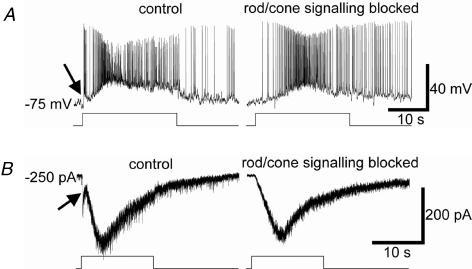Figure 6. Whole-cell recordings of synaptically mediated light responses in ipRGCs.
A, in current-clamp recordings, the response of this ipRGC to prolonged light stimuli consisted of a transient, relatively weak depolarizing synaptic response (arrow) followed by a slower and larger depolarization that outlasted the stimulus (left). The transient response was synaptically mediated (extrinsic), because it was selectively abolished by superfusion with the rod/cone signalling blocker cocktail (right), whereas the larger, slower depolarization and poststimulus response were melanopsin based because they survived the synaptic blockade. Stimulus intensity =−3 log I. B, voltage-clamp recordings (Vhold=−70 mV) reveal the same two response components and confirm that the early, transient response (arrow) was selectively abolished by the rod/cone signalling blocker cocktail. Stimulus intensity =−1 log I.

